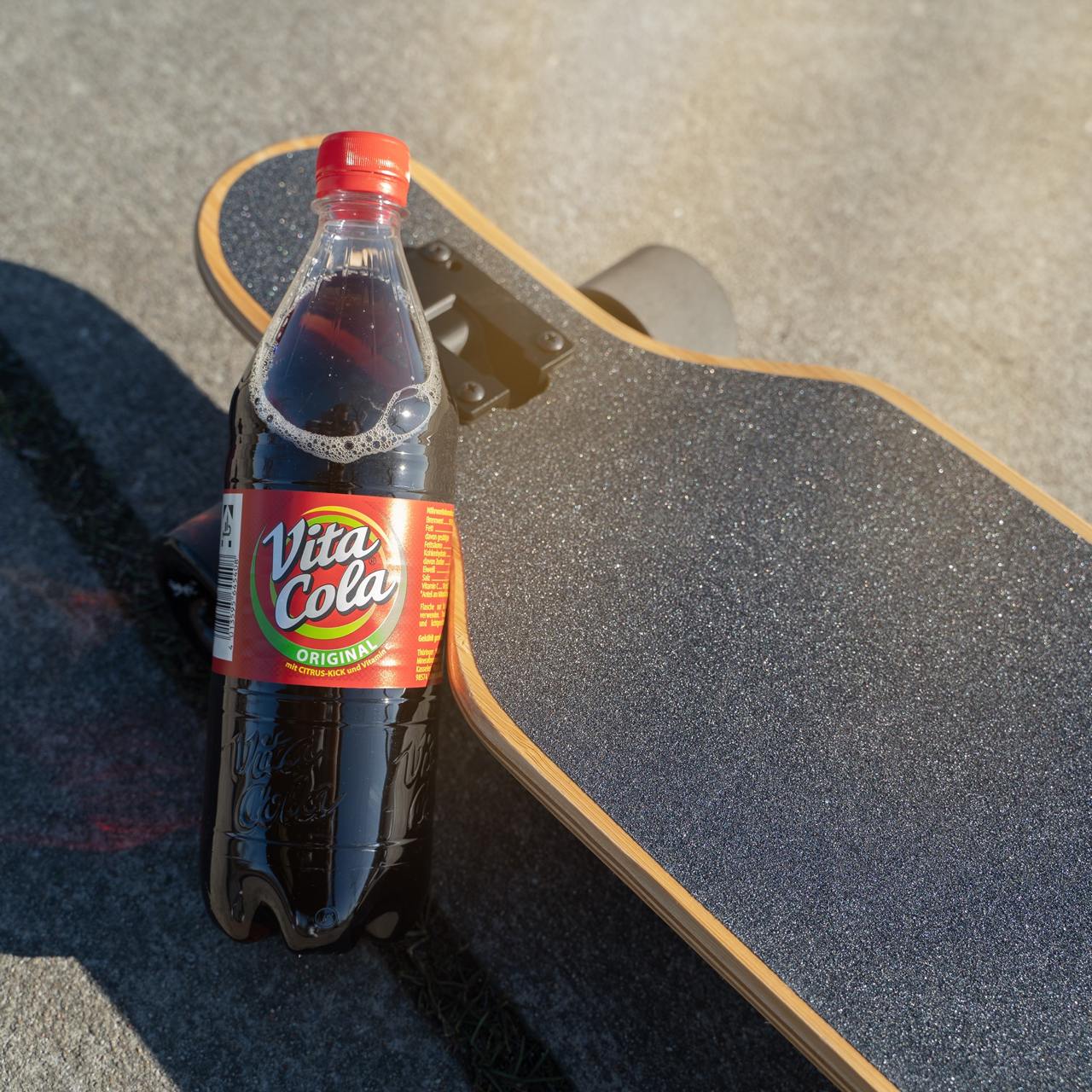If you ever find yourself sipping a soda in Leipzig or Jena and it does not quite taste like Coca Cola or Pepsi, you might have stumbled upon one of East Germany’s most enduring legacies. This is Vita Cola, or as it increasingly appears online, Vita Coka. This is not a knockoff. It is a genuine, homegrown cola built during socialism, buried after reunification, and somehow revived by nostalgia and stubborn loyalty. It is also better than you would expect.
Click to check out #ColaQuest.
Socialist Science and the Birth of Vita Cola
In 1957, the German Democratic Republic was constructing a version of society that did not rely on Western luxuries. Coca Cola was considered a capitalist symbol and was not widely available. In response, the state commissioned its own cola. The result was Vita Cola, created by the state-run VEB Getränkekombinat Leipzig using domestic ingredients and German engineering.
Unlike Coca Cola, which leans heavily on caramel and sugar, Vita Cola took a different route. It emphasized citrus, added herbal extracts, and used less sweetness. The result was sharper, cleaner, and frankly more refreshing. This was cola for the worker, the student, and the state-approved picnic.
It became a national staple in East Germany. School canteens, train stations, and summer camps all served Vita Cola. You can view the original beverage plans in the archives of the Bundesarchiv and see physical bottles and branding from the time at the DDR Museum in Berlin.

Image: Vita Cola FB
The Wall Falls and the West Wins
When the Berlin Wall fell in 1989, Coca Cola and Pepsi did not waste any time. Coca Cola had already opened a bottling plant in West Berlin in the 1980s and was ready to flood the East. Within months, Vita Cola disappeared from shelves. The bottling plants were sold off or converted to Western formulas. Former East Germans flocked to the global brands they had seen in Western television and advertising.
For a few years, Vita Cola was just another disappeared product from the socialist era. It became part of the long list of things people remembered vaguely but could not find anymore. But the story did not end there.
Thuringia Fights Back
In 1994, a small mineral water company in Thuringia called Thüringer Waldquell bought the rights to the original Vita Cola formula and branding. They brought it back quietly, not as a national product but as a regional favorite. The idea was simple: make the original drink, package it with pride, and sell it to people who remembered it from their youth.
It worked. By the early 2000s, Vita Cola was outselling Coca Cola in parts of Thuringia. According to Der Spiegel, Vita Cola had over 40 percent of the cola market in the state. The brand leaned hard into its identity as a product of the East. It did not try to beat Coca Cola globally. It just beat them locally.
Documented Taste Tests and Reviews of Vita Cola
Vita Cola has been the subject of several published taste tests by food and beverage critics, journalists, and bloggers, especially those interested in regional German sodas.
In 2017, the British newspaper The Guardian conducted a cola comparison to uncover local favorites in Germany. Vita Cola was described as “a refreshing alternative to global brands, with a noticeably citrusy tang and a lighter sweetness.” The review noted that Vita Cola’s flavor profile “leans more on herbal and fruity notes than traditional colas”.
Similarly, the German magazine Der Feinschmecker reviewed regional colas in 2019 and gave Vita Cola high marks for “capturing the nostalgic taste of East Germany with its distinct blend of citrus and subtle herbal hints.” They highlighted its balance of sweetness and acidity as a key differentiator from Coca Cola and Pepsi.
On YouTube, the German beverage reviewer GetränkeGuru tested Vita Cola alongside mainstream competitors in 2021. His conclusion was that Vita Cola “offers a fresher, less sugary profile that appeals to those who find Coca Cola too sweet.” The video includes a detailed flavor breakdown.
Finally, the European consumer site TasteAtlas rates Vita Cola as a “recommended regional cola” and describes it as “a must-try for cola lovers who want something different, with a unique citrus-herbal twist.” Their review is based on aggregated consumer feedback and expert tasting panels.

Availability Today
Vita Cola is easy to find across Eastern Germany. Rewe and Edeka stock it in glass and plastic bottles. You will also see it in train stations, vending machines, and sometimes bars. The most common version is the classic, but there is also Vita Cola Pur, which adds more caffeine, and Vita Cola Zuckerfrei, which removes the sugar without killing the flavor.
If you live outside Germany, you will have to order it. Getränke Hoffmann carries it online, and the German Deli Store sometimes has bottles for export. Shipping is not cheap, but fans say it is worth it.


More Than a Drink
Vita Cola is part of a larger cultural phenomenon called Ostalgie, the longing for aspects of life in the former East Germany. Other examples include Rotkäppchen sparkling wine, Spreewald pickles, and Ampelmann pedestrian signs. But Vita Cola is different because it did not just survive as a novelty. It survived by being better than people expected.
This drink represents more than a flavor profile. It represents the ability of a local product to push back against global sameness. Vita Coka is not trying to take over the world. It is just refusing to disappear quietly. That makes it worth celebrating.
Whether you are chasing regional soda legends or just curious what a socialist cola tastes like, Vita Cola delivers. Drink it cold. Drink it with friends who remember. Or drink it because Coca Cola does not need any more of your money.

